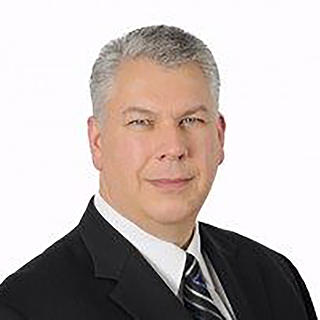The Three Stages of Retirement: The Semi-Active Stage (Part 3)
- Darryl Smith
- Mar 16, 2020
- 4 min read
Updated: Mar 18, 2020

You have enjoyed the first stage of your retirement by fulfilling all your vacation goals and trying all the hobbies and activities you wanted to explore. However, as we age, our energy level begins to slow down, and we aren’t as mentally or physically in shape as we once were. This is where we enter the second stage of retirement known as the semi-active stage.
What is the semi-active stage?
This is known as the slow-down stage in which we begin to realize our bodies and minds don’t work at the same level they used to. This stage usually occurs around the ages of 75-85 and the energy we once had in our active stage of retirement starts to fade away. Instead of constantly travelling and staying active with hobbies, we lean more towards the ‘taking-it-easy’ side of life. This where you may prefer travelling locally and interacting more with your friends and relatives or sticking to a routine rather than going on a new adventure every day. This stage is the transition from ‘retirement excitement’ to ‘retirement stability’. The more we age, the more important it is to set a routine for yourself, so things feel more comfortable and easier for you.
How should you prepare for this stage?
Again, as we age, we realize that we aren’t as physically or mentally capable as we were during the active stage of retirement. This is when we need to plan what will happen with your assets. Before retirement, we invest in properties (cottages, rental properties, larger homes, etc.) or other material things (boats, cars, RV’s, etc.) that we intend on using and enjoying throughout our working lives and active stage of retirement. There are a couple of ways to manage these assets:
Divesting – this is the process of liquidating your assets for financial gain. As an example, if you own multiple cars or trucks and you really only drive one of those vehicles, it may be time to sell the others. Keep in mind that cash flow is equally important in this stage as it was in the active retirement stage. Although you’re not spending as much on leisure purchases such as vacations, you may start to notice an increase in your healthcare bills as you age. At this stage, you still want your money to grow and therefore it's important to choose investments that are still within your risk/reward investment profile. This comfort level changes over time so it’s important to review this on a regular basis.
Downshifting – This is a lifestyle trend in which individuals reduce their material assets in order to live simpler lives. For example, as people get older and their children move out and start to have families of their own, people will often hold on to the larger home they had when raising their kids. As time progresses, they realize the larger home is only a benefit to accommodate family get-togethers and holidays. They also consider the amount of time and money it takes to maintain the larger property and at this point, they will decide to downsize their home. A large property is hard to take care of on your own in the semi-active stage of retirement, and that’s why many people choose to downsize to a smaller space to accommodate their needs and simplify their lives.
Why is it important to plan before this stage?
Without a plan before the semi-active stage of retirement, it will make things more difficult when you actually need to begin downshifting and divesting. If you choose to downsize without a real plan for all your assets, you will most likely realize that you have way too much stuff to move and you have nowhere to put it or no one to give it to. This will drag out the process more and overall increase stress and difficulty for you and your family. That is why it’s crucial to have a plan beforehand when you still have the same energy and drive as you do during your active stage of retirement. You should plan your transition from the first and second stages of retirement beforehand with the help of a financial advisor to ensure you explore all options, and that you’re optimizing your assets and creating cash flow systems that require very little maintenance wherever possible.
During the semi-active stage of retirement, enjoy spending more time with friends and family and less time worrying about where your cash flow will come from by creating an effective retirement plan with me, Darryl Smith, at Synergy Life Financial. Remember to keep adjusting your plan during the active stage of retirement too. By working with a professional financial advisor like myself, who specializes in retirement planning and senior transitions, I can show you how to divest your assets and help you unlock the benefits of downshifting your lifestyle to help better accommodate you during your second stage of retirement. If you’re interested in learning more, you can reach me at info@synergylife.ca to set an appointment. Also, be sure to keep following along with this blog series to learn more about the third stage and how to plan accordingly for that phase of retirement. Don’t forget to check out my handy guidebook as well called 10 Tips to Maximize Blue-Collar Wealth to help you get started on your retirement plan if you own a blue-collar business. Maximize your wealth and retire stress-free by working with me today!





Comments